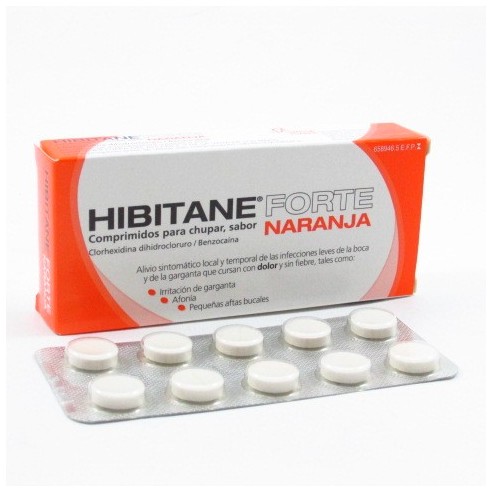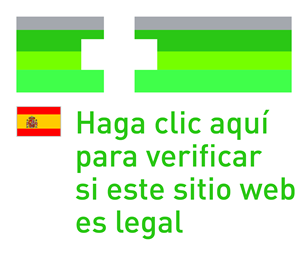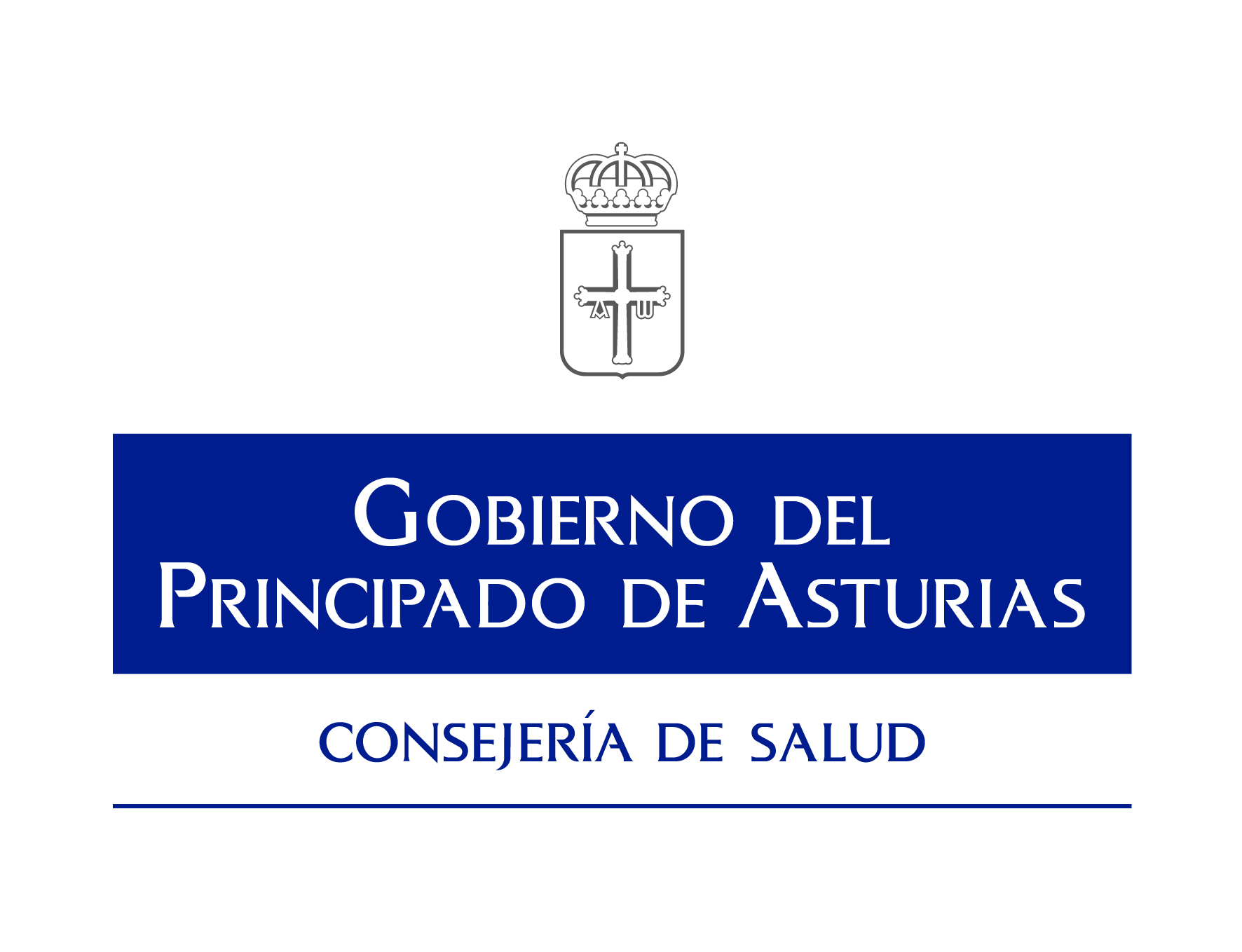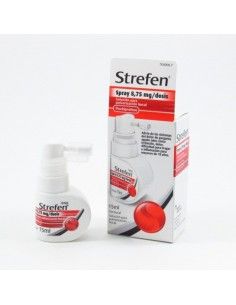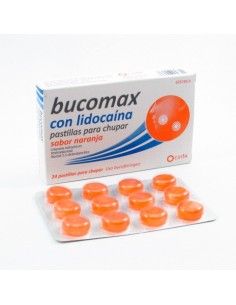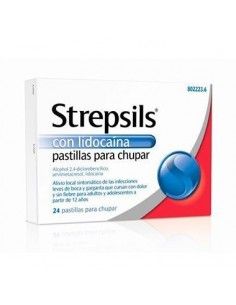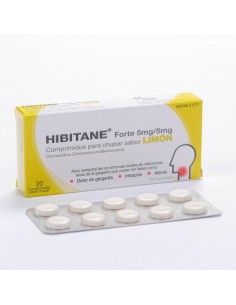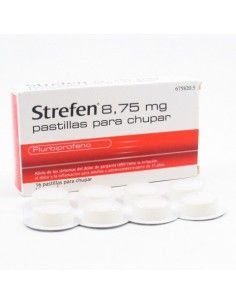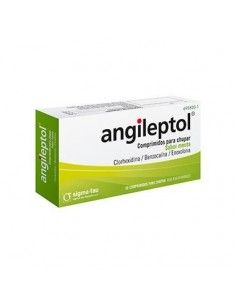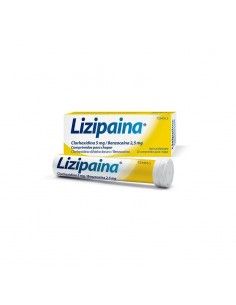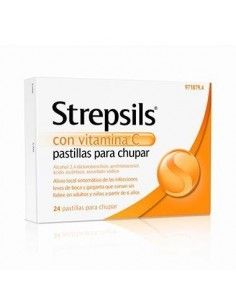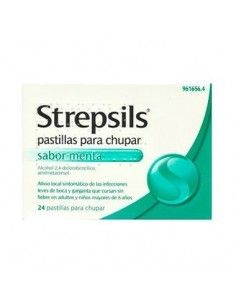Action and mechanism
Association of broad spectrum antiseptic (chlorhexidine) and ester-type local anaesthetic (benzocaine).
Indications
- Symptomatic relief of mild infections of the mouth and throat with pain, such as: [PHARYNGITIS], [LARYNGITIS], [AFFONIA], [GINGIVITIS], [STOMATITIS], [ORAL AFFECTIONS].
Posology
- Adults: 1 tablet when necessary, allowing at least 2 hours between doses. Maximum dose: 8 tablets per day
- Children over 6 years of age: same dose as adults.
- Children under 6 years of age: Not recommended.
In case of aggravation or persistence of symptoms for more than 2 days, or if symptoms are accompanied by high fever, headache, nausea or vomiting, the clinical situation should be evaluated.
Guidelines for correct administration
Allow to dissolve slowly in the mouth; do not chew or swallow.
Contraindications
- ALLERGY TO LOCAL ESTER TYPE ANAESTHESICS] or to clohexidine or to any of the excipients.
Precautions
- Intolerance to PABA, parabens or paraphenylenediamine (a hair dye). These patients may also be intolerant to benzocaine.
- Children, elderly, acutely ill or debilitated patients: these are more sensitive to the systemic toxicity of benzocaine, and methaemoglobinaemia may occur.
- Local infection in the treatment area: the pH is altered, which reduces the local anaesthetic effect.
- Severe mucosal trauma: increases absorption of the anaesthetic.
- Incisor tooth fillings: if the surface of the filling or its margins are rough, chlorhexidine may cause them to become permanently coloured and need to be restored for aesthetic reasons.
- Periodontitis: Chlorhexidine causes an increase in supragingival calculus.
- It is recommended to maintain proper oral hygiene, with special anti-tartar toothpaste, to reduce tartar build-up and tooth discolouration caused by chlorhexidine.
- The tablets should not be chewed or swallowed, as their action is totally local and their activity is only evident if the product is in direct contact with the affected area.
- If symptoms persist for more than 2 days or become more severe or are accompanied by high fever, headache, nausea or vomiting, consult a doctor as soon as possible.
Patient advice
- Not recommended for children under 3 years of age (regular and forte mint tablets) or 6 years of age (forte orange-flavoured tablets).
- The tablets should not be chewed or swallowed as they have a local action.
- May permanently colour fillings if the surface or margins are rough.
- Maintain proper oral hygiene, with special anti-tartar toothpaste, to reduce anti-tartar build-up and staining caused by chlorhexidine.
Special warnings
- In patients with periodonitis, chlorhexidine causes an increase in supragingival calculus.
Interactions
Due to the presence of benzocaine, interferes with:
- Cholinesterase inhibitors: inhibit the metabolism of the local anaesthetic, with the risk of increased systemic toxicity.
- Sulphonamides: metabolites of benzocaine may antagonise the antibacterial activity of sulphonamides.
Pregnancy
There are insufficient data on the use of chlorhexidine and benzocaine in pregnant women.
Chlorhexidine: No fertility impairment, fetotoxic actions or peri-post natal toxicity have been reported in experimental animal studies.
Benzocaine: No problems have been reported with benzocaine in pregnancy.
Lactation
It is not known whether chlorhexidine is excreted in breast milk.
No problems have been reported with benzocaine in breast-feeding.
Children
Due to its benzocaine content it should not be administered to children under 6 years of age. Children are more sensitive to the systemic toxicity of benzocaine and methaemoglobinaemia may occur.
Adverse reactions
Adverse effects are generally mild and transient. The most characteristic are:
-Occasionally, brown discolouration of teeth, fillings, dentures and other oral appliances and the tongue. Tongue discolouration disappears spontaneously and is not dangerous. Tooth discolouration is not permanent and can be removed by oral cleaning. The staining of fillings can be permanent.
- At the beginning of the treatment, temporary alterations in taste and a burning sensation in the mouth may appear.
- Increased tartar build-up.
- Rare cases of oral irritation due to scaling lesions, sometimes painful (especially in children aged 10-18 years), which is usually temporary, and irritation of the tip of the tongue have been reported.
- Also in rare cases local allergic reactions, sometimes accompanied by nasal congestion, itching, skin rash.
- Itching, stinging, swelling or redness in or around the mouth.
Adverse reactions that may arise from the presence of benzocaine are due to overdosage or rapid absorption, as well as the idiosyncrasies of the patient, and include contact sensitisation and angioedema (due to allergic reaction or contact dermatitis).
Overdose
At the proposed doses, overdosage is unlikely to occur.
- Symptoms: due to chlorhexidine, especially in children, symptoms of alcohol intoxication (slurred speech, drowsiness or staggering gait). Symptoms due to benzocaine: CNS stimulation (symptoms are blurred or double vision, dizziness, convulsions, ringing in the ears, excitement), followed by CNS depression (drowsiness), depression of the cardiovascular system, increased sweating, low blood pressure or slow or irregular heartbeat. Methaemoglobinaemia (shortness of breath, dizziness, fatigue, tiredness, weakness) may also occur.
- Treatment: as far as chlorhexidine is concerned, it is mainly symptomatic.
Administer oxygen or institute assisted ventilation, and for circulatory depression administer a vasoconstrictor and intravenous fluids. Treatment of methaemoglobinaemia: methylene blue.

